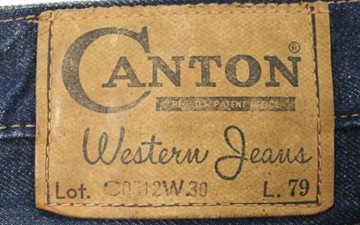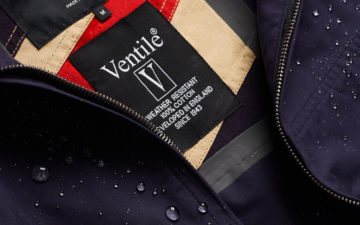- Heddels
- Posts
- April 10 - Waxing Lyrical Candles
April 10 - Waxing Lyrical Candles

Waxing Lyrical – All About Candles
Sources of light, comfort, and even time-keeping, candles are the most primitive light sources that remain commonplace in today's world.
James Smith
Sources of light, comfort, and even time-keeping, candles are the most primitive light sources that remain commonplace in today’s world. The gentle flicker of a burning wick provides a luminary experience like no other, and when it is slowly melting thick wax is imbued with the pleasant scent of essential oils or natural extracts.
in the modern world, candles are used purely for decorative, aromatic, or ceremonial purposes, but prior to the invention of electricity and the lightbulb, candles — in conjunction with other fire-based light sources – played a crucial role in illuminating the human world, from the streets of Ancient Egypt to the desks of writers and politicians in the world’s most advanced cities.
In this article, we’re delving into the world of candles, from their humble, animal-fat-soaked beginnings to their place in modern society, filling our homes with comforting glows and aromas.
The History & Types of Candles

The depiction of rushlights being transported, via Ashwood Candles.
The definition of a candle is:
“An ignitable wick embedded in wax, or another flammable solid substance such as tallow, that provides light, and in some cases, a fragrance.”
Although candles are one of our oldest light sources, the fundamentals of their design have barely changed in almost a millennia – ‘a wick embedded in a flammable solid substance’. The Ancient Egyptians are credited with the first use of a wick-based lumination system, known as a rushlight. A rushlight is a type of candle or miniature torch formed by soaking the dried pith of the rush plant in fat or grease. The Ancient Egyptians are said to have soaked the pithy core of reeds in animal fat to create a light source that was then placed into a metal holder.

A typical rushlight sat in a traditional metal rushlight holder, via Julian Cartwright.
Rushlights are different from candles in that there is no wick — the pith is soaked/impregnated in the fat — but this Egyptian invention laid the foundation for the development of the modern candle.
The earliest known dipped/poured candles are said to date back to the Han Dynasty (221–206 BC) of China. Evidence suggests that these earliest Chinese candles were made of whale fat and used for lumination and ceremonial purposes. The Romans followed this up, producing candles by dipping cotton, hemp, or flaxen wicks into tallow —a wax derived from the rendered fats of animal meat. They, too, used candles as a light source and as a religious offering to the gods, particularly during the ancient Roman festival of Saturnalia, in worship of the God Saturn. Pharaohs and other royalty were treated to beeswax instead of tallow, which burned cleaner and offered a sweet scent to fill living spaces.
Tallow candles became a vital element of daily life in the Middle Ages (500 – 1500 CE). These were produced by melting down tallow and either dipping a cord made of reed pith into it or by pouring the melted tallow into a mold and setting the pith cord into it as a wick.
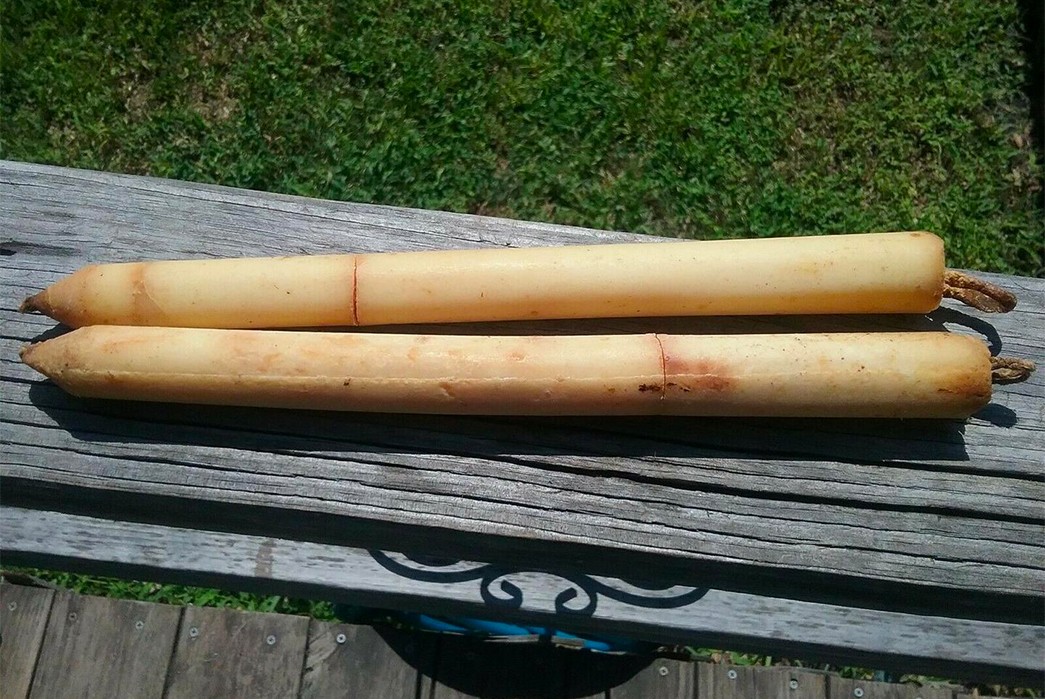
Antique tallow candles via WorthPoint.
It would be a few hundred years before the lightbulb would be invented, and electricity was not commonplace until well into the 20th century, so illuminating rooms and living spaces was achieved by lighting tallow candles, oil lamps, and other fundamental light sources. Those too poor to afford a clock would even consider using candles as a clock. “Candle clocks” were created by marking candles (or their holder) with incremental lines that indicated the passing of each hour as the candle burned down.
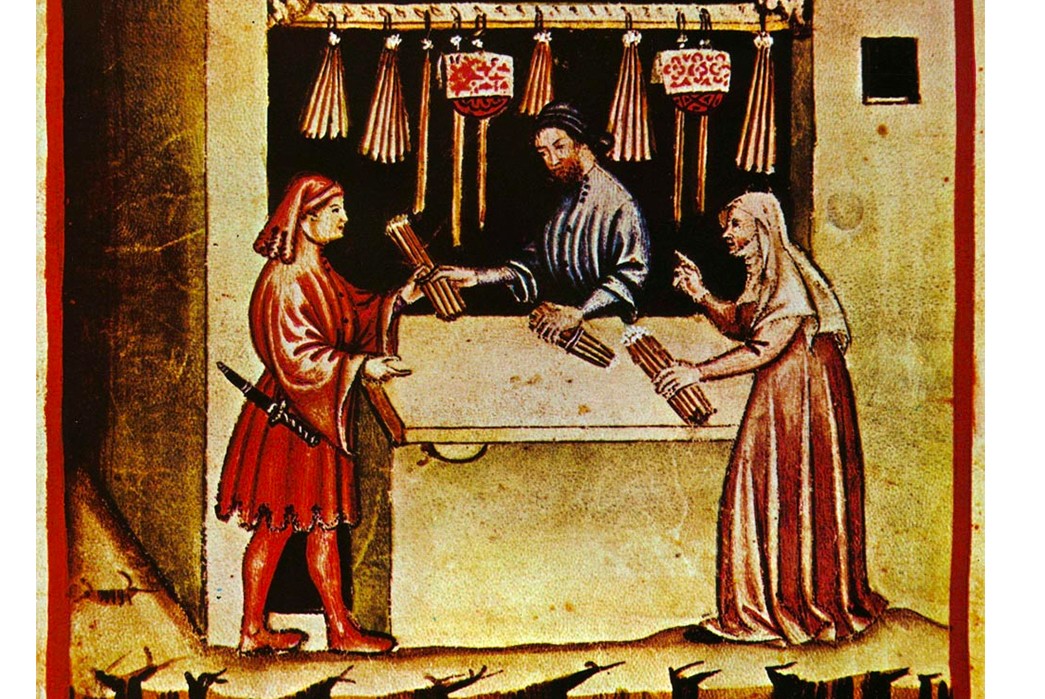
An 11th century illustration from the Tacuinum Sanitatis of a chandler selling taper candles. Image via Wikipedia.
By the 13th century, candlemaking had become a guild craft in England and France. Candlemakers (known as chandlers) went from house to house making candles from saved kitchen fats or sold candles from their own candle shops. It’s crazy to think that during these times, candles would have been a staple grocery item, your stocks of which had to be considered on a daily basis.
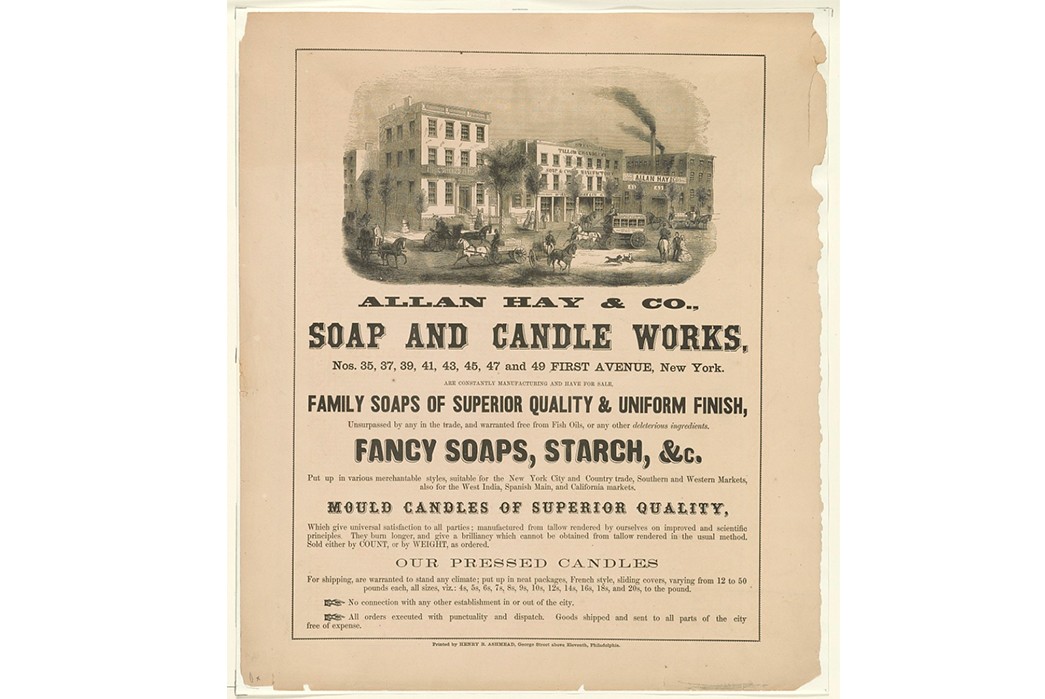
A vintage advert from Allan Hay & Co. advertising ‘superior quality’ candles produced from proprietary tallow. Image via Library of Congress.
None (all) of Your Beeswax
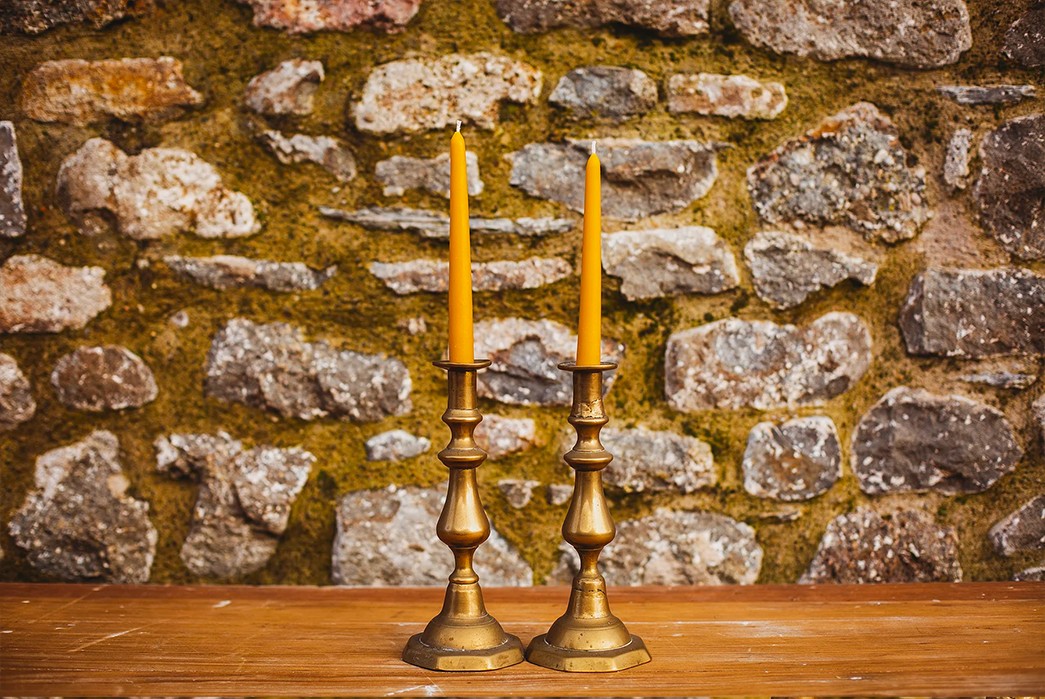
Beeswax candles via Gwenyn Gruffydd
Tallow was a highly efficient substance to produce candles with, available abundantly from excess cooking of meats. However, you can imagine that the smell of burning animal fat (even if imbued with scented oils) would not only smell bad at times but also give off undesirable smoke.
To combat this, beeswax candles were introduced to Europe around 1500. However, beeswax was expensive, and thus candles made of the substance were also expensive and afforded only to the wealthy.

Remains of a centuries-old beeswax candle discovered at a Norwegian glacier via The-Past.
Parrafin & Soy

Vintage Cordova Candle by Standard Oil ads, via Period Paper.
Paraffin wax was introduced in 1830 by chemist Carl Reichenbach and became a common candlemaking substance in the mid-1850s, after the Scottish chemist James Young developed a method of distilling paraffin from coal and oil shales, leading to mass production.
Odorless and light in color, paraffin revolutionized candlemaking because it burned consistently and without smoke, and was more economical to produce than any other candle substance. It also allowed scented candles to become affordable, as its odorless burn meant far less essential oil was required to produce the desired smell.

Candles as symbols of class. Caricature in the “Wiener Theaterzeitung”, ca. 1848. Apollo and Milli – the names refer to two of the first stearin candle factories in Vienna. The visibly poorer folk are shown being hampered by drippy tallow candles, whilst the Apollo & Milli don cleanly burning candles containing stearic acid. Image via Metropolitan Museum of Art Libraries.
The main drawback of paraffin was its low melting point, meaning candles burned for shorter amounts of time and melted more intensely. Chemists solved this by introducing stearic acid — a fatty acid that is derived from tallow or vegetable oil — which hardened the paraffin and improved candle performance.
With the introduction of the light bulb in 1879, candlemaking began to decline in the Western world. They were still mass-produced, though, and enjoyed a renaissance in the 1980s as homeware items for mood, scent, and decoration.
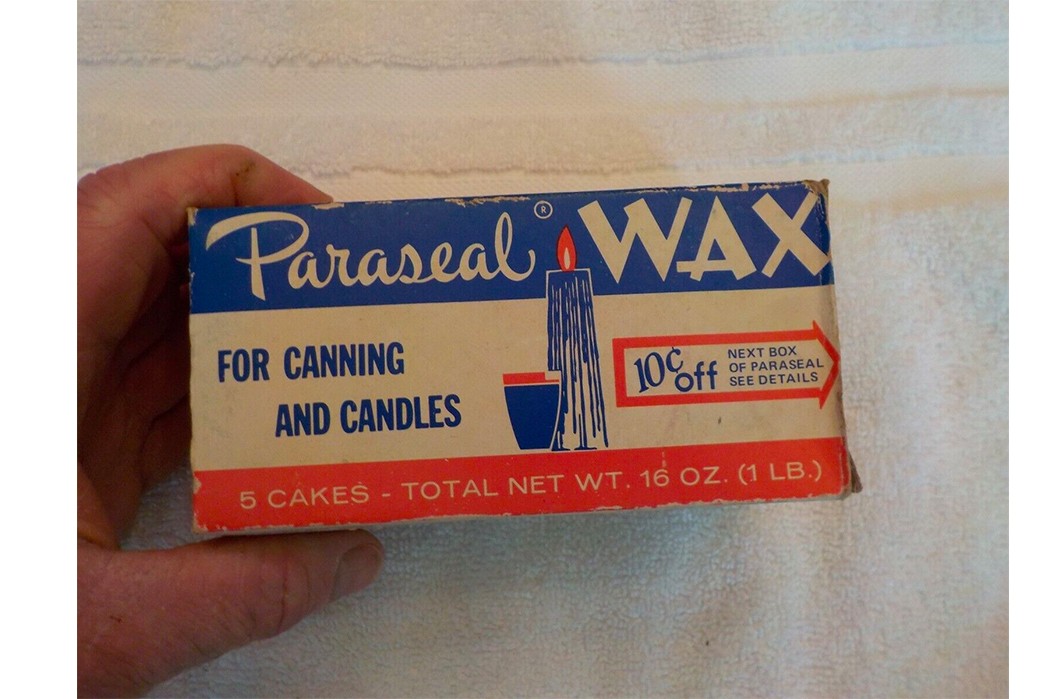
Vintage Paraseal Wax For Canning & Candles W.& F. MFG. CO. BUFFALO N.Y. – image via guitarkirdrk on eBay.
Soy
The upsurge in demand for candles carried on to, and peaked in, the 1990s. And whilst candles containing soy had been around for hundreds of years, pure soy candles were far less common. During the 1980s, candlemakers began blending soybean wax with paraffin wax, allowing them to add scents that did not manifest well in pure paraffin. Soy-based candle development continued in the 1990s as the demand for purely natural candles continued to grow, and soy oil was found superior to other candle fuels for many reasons: it’s cheaper than other natural oils like almond or beeswax, more renewable, burns cleaner, and worked perfectly with cheap and sustainable cotton wicks.
By the late 1990s, soy-based candles had become extremely common, and the availability of soy wax made space for smaller makers in a world previously dominated by big chemical companies. Heating and pouring clean soy wax produced specifically for candlemaking was achievable from say, your kitchen, as you didn’t have to blend in any chemical waxes. Neat! This is why it’s so easy to log onto Etsy or go to a local market and find batch-made soy candles these days.

Soy wax candles being poured in a small batch. Image via The Candle Studio.
Coconut
As demand for soy-based food, beauty, and other domestic products has boomed, so have concerns about the sustainability of soy farming. Sadly, most of the soy farmed is in fact farmed for the meat industry, used to feed cattle in mass farming operations due to its high protein content. This, in turn, tars soy with the ‘unsustainable’ brush, when in fact the issue is highly complex and spans multiple industries.
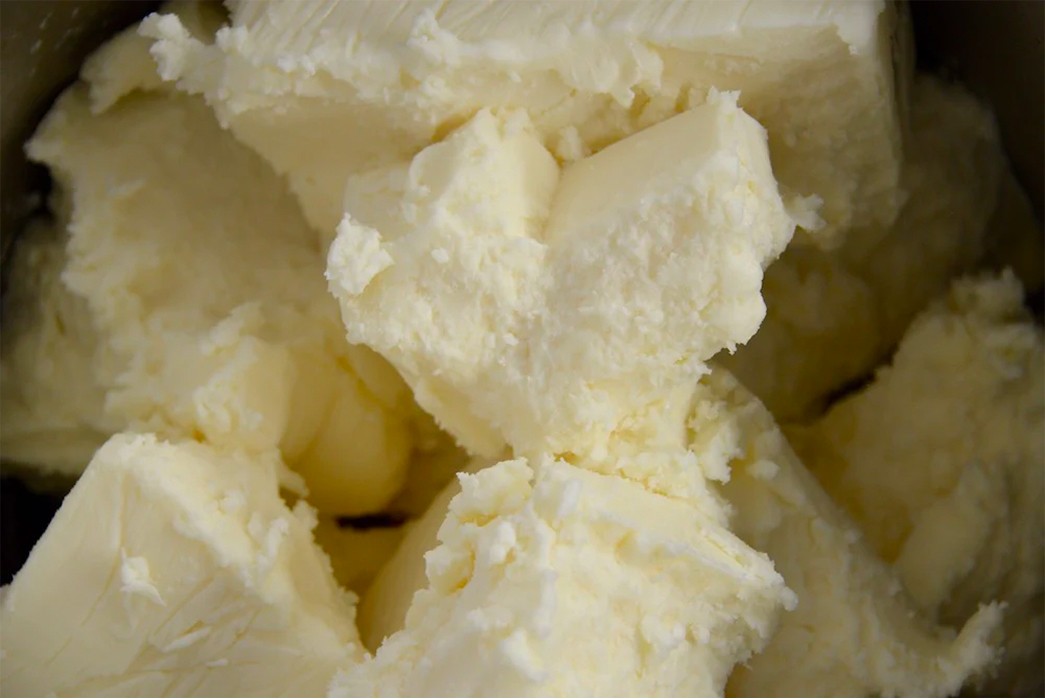
Coconut wax flakes via Keep Candles.
Regardless, these concerns surrounding soy have led candlemakers to investigate potential alternatives. Coconut oil has proven a reasonably priced alternative with similar burning properties when processed into candle wax, and the recent boom in demand for coconut oil has made it affordable for chandlers. However, just like soy, the mass-farming of coconuts is also raising questions about their sustainability, despite the best efforts of coconut-exporting nations like the Philippines to strengthen sustainable coconut production.
Like most mass-exported materials, there is no simple answer to the sustainability question. One thing that is certain, though, is that all-natural candles made of soy or coconut wax are better products than their fossil-fueled counterparts made of paraffin.
Caring for Candles
Candles are easy things to care for. To get the most out of your candles ensure that you:
Don’t overburn – Burning your candle for too long will ruin the wick and affect future burns. Overburning causes carbon to collect on the wick, causing it to balloon at the top and leaving it liable to droop, burning your wax unevenly. Candles should ideally be burned one hour for every inch in their diameter, but no longer than four hours at a time.
Trim your wick – trimming your wick down by 3mm before each burn will ensure an even burn, prolonging your candle’s life. By trimming the wick, less oxygen reaches the flame, keeping the flame small and preventing overburning. A pair of large, sharp nail clippers is great for trimming wicks.
Keep the wick central – If you leave your candle burning for too long and notice the wick has drooped, just trim it and gently pull it up so it stands tall and centered.
Stop burning when wax reaches the bottom – When the melted wax only stands around 1/3 of an inch from the bottom, stop burning the candle completely. Excess burning when there is not much wax can crack the container, causing spillages and potential damage to your home.
Keep away from open windows – Keep your candles away from sources of wind when burning. The wind can blow the flame in one direction, causing an uneven melt to your wax which will affect future burns.
Heddels-Approved Candles
It’s now easier than ever to buy top-notch candles. The widespread availability of soy wax and essential oils, as well as online learning resources like YouTube, means that many individuals and established companies have taken to producing candles. Here are some of our recommendations for high-quality candles. To align with our ethics surrounding quality and sustainability, we will be focussing on 100% natural candles, here.
D.S. & Druga

Hand-poured in NYC with 100% soy wax, D.S. & Druga make unique and captivating candles in a range of scents, from Christmas trees to ’pasta water’.
Available for $70 from STAG.
Square Trade Goods Co.
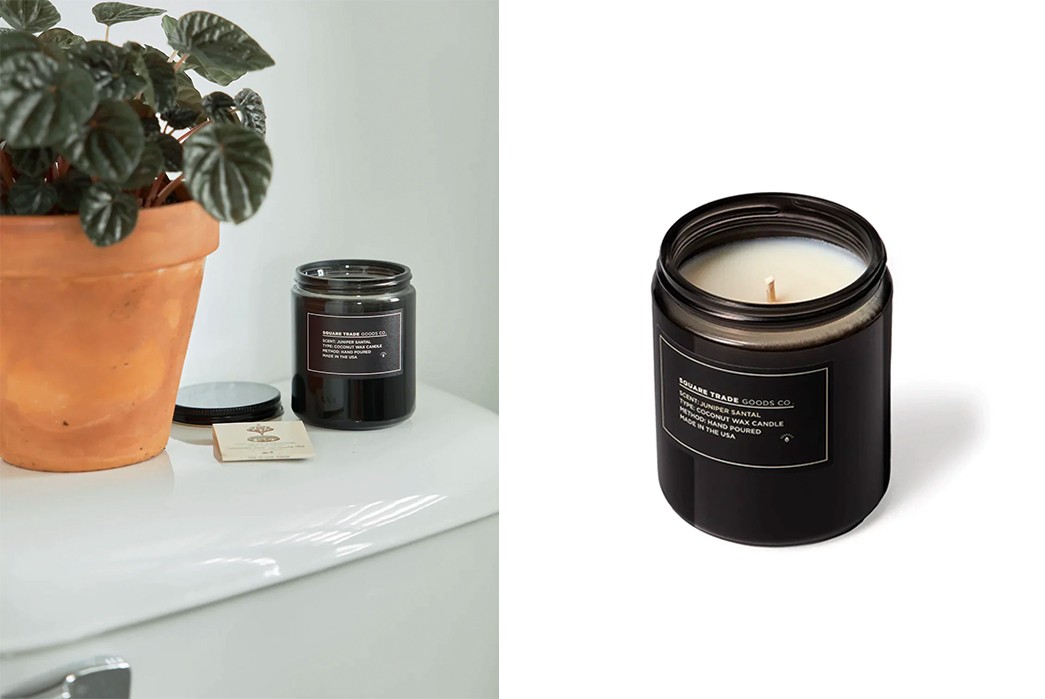
Square Trade Goods Co. pours soy wax candles by hand in Richmond, VA.
Available for $28 from Iron Shop Provisions.
Lineage Goods
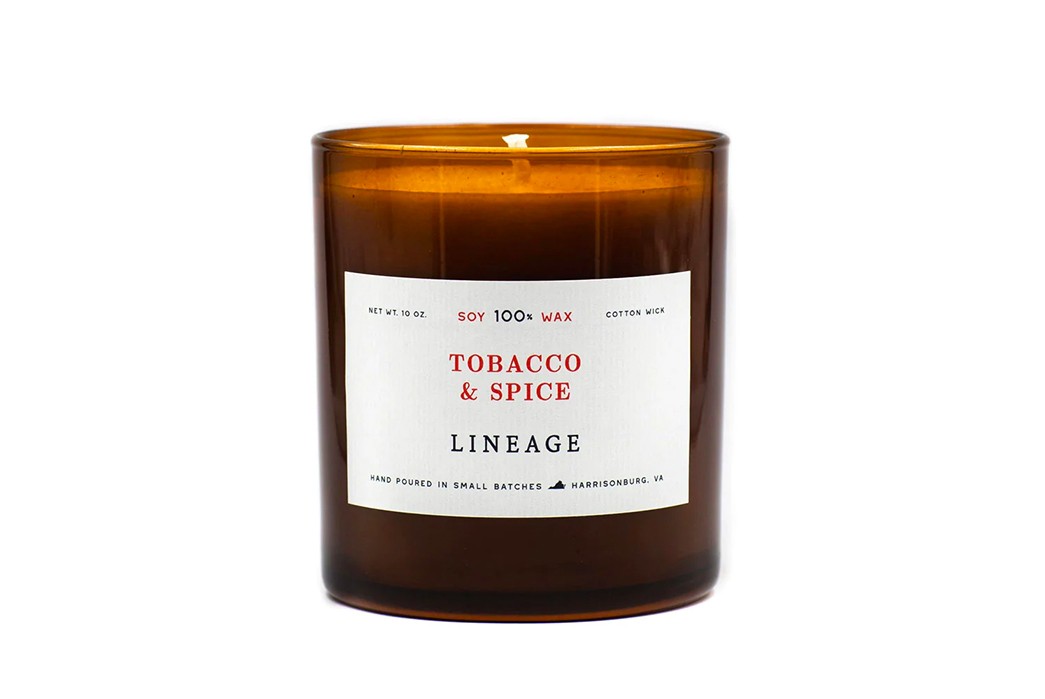
Based in Virginia, Lineage Goods is a multi-disciplinary studio creating a collection of canvas and leather bags, accessories, candles and fragrance. Their candles are hand-poured in small batches, using 100% US-made and sourced soy wax.
Available for $24 from Hatchet Supply Co.
Upstate Stock
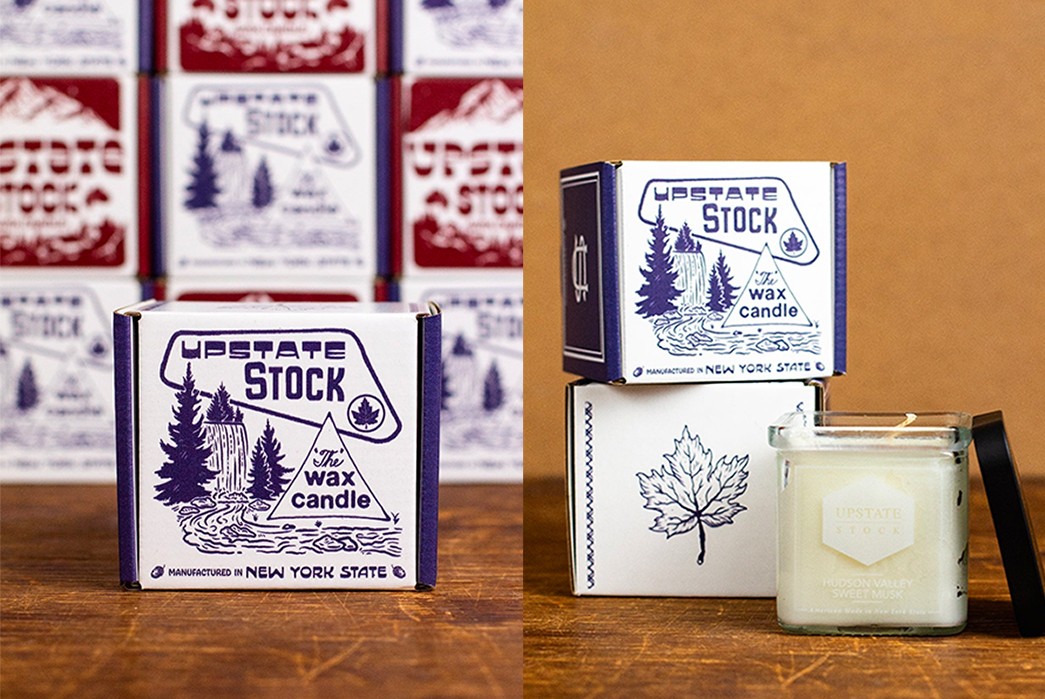
Upstate Stock makes its candles in Brooklyn, NY, using a California-made sustainable and non-GMO coconut oil-based wax. Coconut wax is poured at a very high temperature which creates a long-lasting, clean-burning candle that has an excellent scent throw.
Available from $26 at Upstate Stock.
Bradley Mountain

Bradley Mountain’s candles are made in the USA from 100% soy wax and come in a range of attractive aroma from burnt oak to cardamom, wild fig, and beyond.
Available for $26 from Bradley Mountain.
Good & Well Supply Co.

Good & Well Supply Co. crafts products that celebrate nature, whilst advocating for and supporting public lands through annual donations to the National Park Foundation and Washington National Park Fund. Their candles are made from 100% soy wax and come in a completely recyclable container.
Available at Clutch Cafe from $41.
Like this? Read these:
What did you think of today's newsletter?
